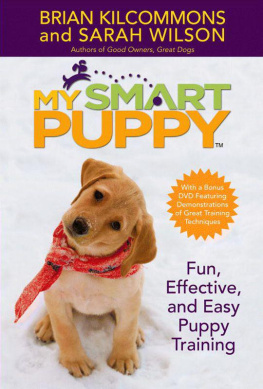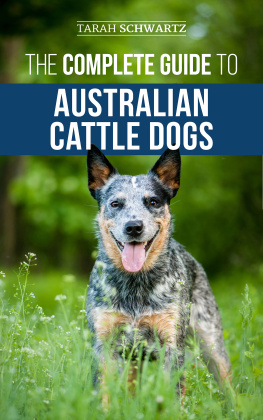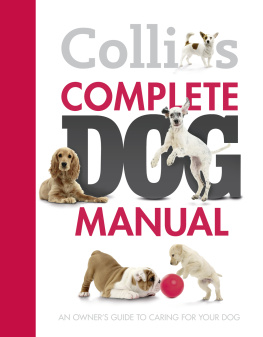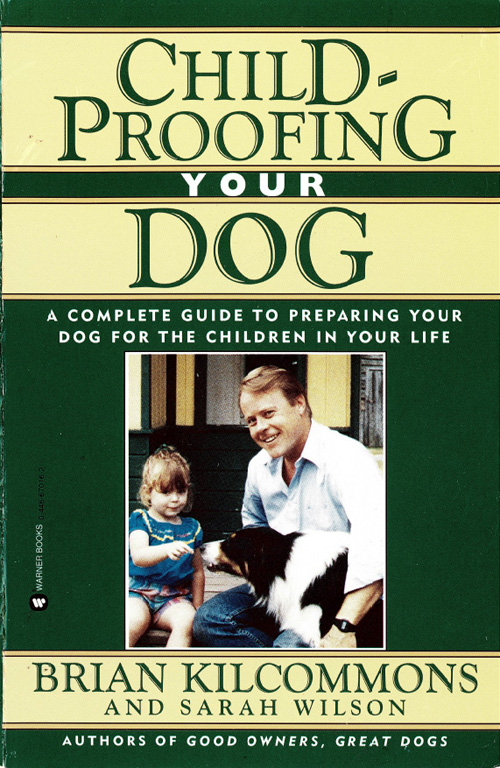Copyright 1994 by Brian Kilcommons and Sarah Wilson
All rights reserved.
Warner Books, Inc.
Hachette Book Group
237 Park Avenue
New York, NY 10017
Visit our website at www.HachetteBookGroup.com
First eBook Edition: November 2009
ISBN: 978-0-446-56611-7
- WHY A NORWICH TERRIER OR A LABRADOR RETRIEVER IS A BEST BET FOR KIDSBUT ROTTWEILERS AND CHOW CHOWS ARE OFF LIMITS?
- WHY PLAYING TUG-OF-WAR WITH YOUR DOG CAN LEAD TO PROBLEMS?
- WHY NEUTERING A MALE DOG IS A MUST?
- HOW TO TEACH YOUR DOG TO ACCEPT, EVEN ENJOY, HAVING HIS TAIL PULLED OR HIS FUR GRABBED?
- HOW TO TELL IF A DOG IS FRIENDLY OR NOT?
AN ESSENTIAL BOOK FOR EVERY FAMILY
WITH A DOG AND KIDS
FROM THE ACCLAIMED AUTHOR OF
GOOD OWNERS, GREAT DOGS
Brian Kilcommons, a world-class trainer who has worked for the ASPCA and the Public Broadcasting Systems series on veterinary medicine, knows his stuff.
Chicago Sun-Times
Brian Kilcommons and Sarah Wilson are knowledgeable, witty guides to the ways and whys of canine behavior.
Franklin M. Loew, D.V.M., Ph.D., Dean,
Tufts University School of Veterinary Medicine
Trainer Brian Kilcommons shows he doesnt just understand dogs, he understands people and how to get through to them.
Orange County Register
Kilcommons is one of the countrys most respected dog trainers.
New Yorkmagazine
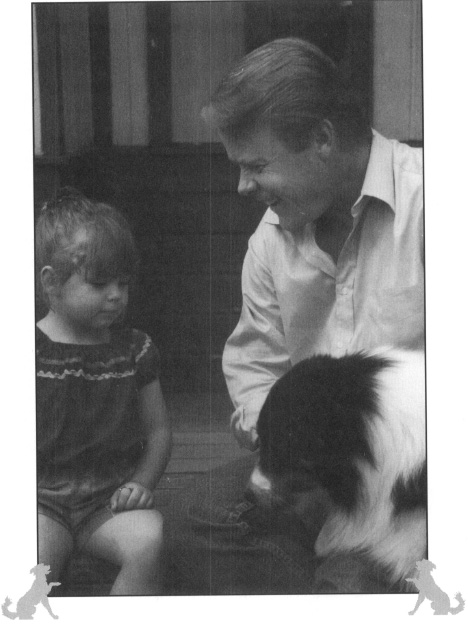
This book is dedicated to Irish, Cookie, Lady,
Tee, Nutmeg, Hannibal, Coco, and Butterflythe
dogs who began it all and who made our childhoods
rich with wagging tails and friendly faces.
F rom personal experience, we both know the richness and wonder animals add to childhood. Scientists of all types are now studying the positive effects pets have on children. They discuss the development and enrichment of bonding, responsibility, stability, and empathy. Anyone raised with a dog can confirm this. The waking up in the middle of the night frightened by a dream and hugging the pet close. The ridiculous games played with the tolerant dog. The happily wagging tail saying all is well to a child coming home to an empty house. The uncritical friend, lying quietly next to the bed of a youngster recovering from some childhood crisis. The curious companion tagging along on a walk through the woods.
This book is written in the hopes of passing on this magic. In order to get the most out of Childproofing Your Dog, you must first build a foundation of communication and understanding between you and your dog through command training. This is a project in and of itself, so we have supplied a bibliography to help you find the information you need to do this successfully. We supply basic information when needed, but to fully understand how a dog thinks and learns, please read one of the recommended books. And if you havent already undertaken basic command training, dont delay any longer. The techniques described in Childproofing will work to best advantageand your childs safety is best servedwhen such training is in place.
To childproof something means to take measures to make it as safe as possible for your child. But with all the changes you may make in your home, for example, there is no guarantee that your child wont bump his head on the bookshelf or scrape her knee in the driveway. Childproofing is about preventing the preventable as much as that is humanly possible. Thats exactly what this book is about. It is no promise that your dog, or any other dog, will never harm a child. But it does give you many steps and exercises that you can do with your dog and your child to help them avoid some of the most common problems.
Our childhood memories of our pets are endless. And all the while, our wonderful canine companions were teaching us about responsibility, thoughtfulness, loyalty, consistency of the heart, and what it is to lovewithout either of us even knowing what we were learning. Neither of us would ever voluntarily be without a dog in our lives. Neither of us can even imagine it. Dogs are too interwoven in our vision of the world. We created this book so that more people can enjoy the gifts that dogs have to offer without the worries or concerns that misunderstanding and miscommunication can bring.
Brian Kilcommons and Sarah Wilson
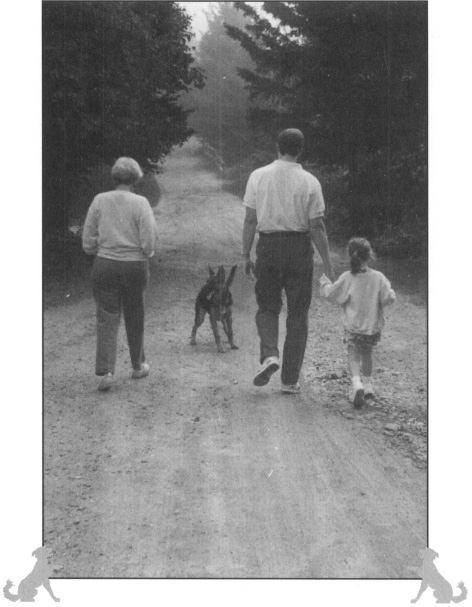
Choose a dog as carefully as you would a
housemate!.
A jax, a young Weimaraner, dragged eight-year-old Ellen into our office, in the process yanking the lead out of Ellens hand. Mr. and Mrs. Woods came in after. How did you choose Ajax? I began.
The man at the pet store recommended this breed for the city. Weve never had a dog before. We wanted a calm, easy one. He said Weimaraners werent too active and would be good with our little girl.
I shook my head in disagreement. No, Weimaraners are as active as they come and strong willed as well. Ajax would have been a fine choice for an active, experienced dog owner but not for an inexperienced, basically sedentary, urban family.
This first chapter addresses the questions you should consider when choosing your family dog: Do you really want a dog? How old should the children be when you get a puppy? Is a male or female better for a family? Which breeds make the best family dogs? Where do you get a good dog, and how do you select a puppy or adult dog? We begin with what makes a good family dog.
A good family dog
fits in with your lifestyle
If you jog daily, by all means get an active dog but dont think that you will become a triathlete when you get a dog. It wont happen. Assume things will stay the same and choose accordingly.
tolerates touch or noise and forgives mistakes
Some dogs are more physically sensitive than others. Hunting breeds had to run through briars and tolerate the sound of guns to do their job. Some of the tiny breeds, however, bred solely to cuddle, hate rough handling. To work well in the average family, dogs must accept noise, lots of touching and be forgiving.
calms himself once excited
The ability to calm downto stop barking once the guest is inside, to relax after the child has stopped pulling his tailis critical to being an easy and safe family companion.
likes people
Pet-store puppies who have been in cages for too long or kennel-raised older dogs may never have much interest in you or your children. Shy dogs may eventually accept the immediate family but often dont adjust to your childs playmates. Look for a pup that has been handled every day, was raised in the house, preferably around well-behaved, well-supervised children.


